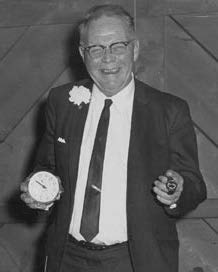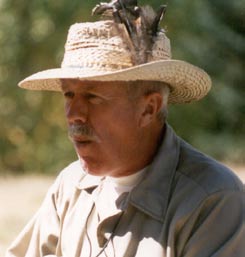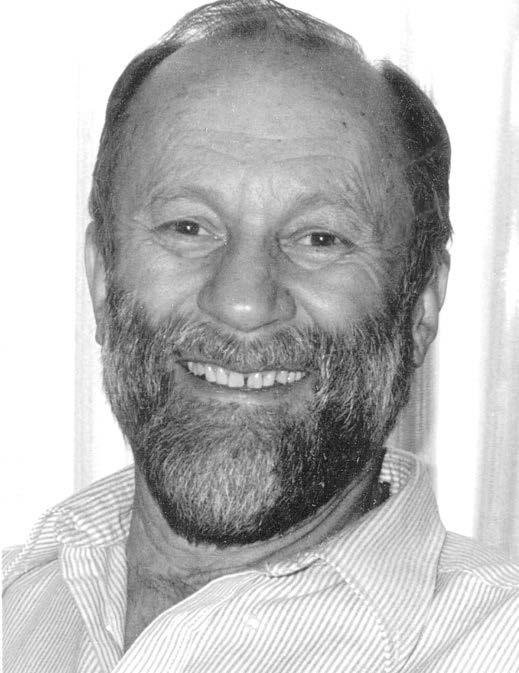Memorial Funds supporting CSS Research Grants to Students
Since 1984, the Colorado Scientific Society has established six memorial funds honoring distinguished CSS members. These funds were created by and continue to be supported by the gifts of members and friends. Income from the funds is provided to students to support research in earth sciences.
As a result of generous contributions by family, friends, and Society members, each of these funds has grown substantially since its inception. As of March, 2021, the total market value of our Memorial Fund investments was about $319,000.
The Memorial Funds honor these CSS Members and their interests:
- Ogden Tweto (1984): Field-based earth-science research in Colorado and adjacent areas;
- Steven Oriel (1986): Geologic studies of the Idaho-Wyoming thrust belt and associated topics;
- Edwin Eckel (1990): Engineering geologic studies in the United States;
- Bill Pierce (1994): Studies of the Heart Mountain Fault, Wyoming, and associated problems;
- George Snyder (1998): Studies of Precambrian igneous/metamorphic geology and basement tectonics in the Rocky Mountain region.
- Bruce Bryant (2022): Field oriented student research.
The principal dollars that are donated to each fund are invested in a conservative mix of bonds and corporate stocks that are managed for the Society by an investment firm. The goal of these investments is to protect our principal and generate income. We use only income generated from the Funds to finance our Memorial Fund awards. Since 1996, the Society has awarded grants that in 2021 total between about $10,000 and $13,000 each year.
In addition, the Charles Pillmore Fund (established in 2004) supports student participation on Colorado Scientific Society field trips.
Note: To apply for CSS Student Research Grants go to CSS Student Research Grants.
Most of the following information is from History of the Colorado Scientific Society from 1882 through 2002 (PDF), pp 49-55
=
Ogden Tweto Fund
Ogden Tweto earned his B.S. and M.S. degrees from the University of Montana in 1934 and 1937, respectively, and his Ph.D. in geology from the University of Michigan in 1947. He began work for the U.S. Geological Survey in 1940. After 20 years of field-related research, almost all of which was in Colorado, he served as Chief of the Southern Rocky Mountain Branch, in Denver, 1961-65, and as Assistant Chief Geologist for Economic Geology, in Washington, D.C., 1965-69. His numerous publications ranged from detailed geologic maps to papers on subjects ranging from Precambrian to Tertiary geology, and from tectonics to ore deposits. He compiled the Geologic Map of Colorado, a monumental effort, and, in later years, focused his attention on the Precambrian basement rocks of Colorado and the various episodes of deformation. Ogden received the Distinguished Service Award from the Department of Interior in 1970.
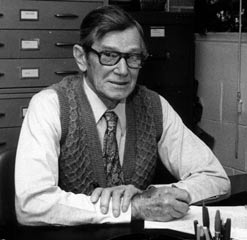
Ogden died November 23, 1983. Charles Pillmore, then Acting President of the Colorado Scientific Society, and Steven Oriel discussed ideas for a memorial to Ogden. They felt that a fund to aid student research in Colorado would be a fitting memorial. Paul Sims, a long-time colleague of Ogden, concurred. Paul then contacted the Tweto family, who approved the concept. Pillmore wrote draft guidelines for a memorial fund and submitted them to the Council, which were approved by the Council on November 27, 1983.
An announcement, a policies and procedures statement, an application form (using a Geological Society of America application form as a guide), and a student appraisal form (to be filled out by a faculty member) were designed. This package is sent to designated universities and colleges and to those individual applicants requesting them. The guidelines, policies and forms created for the Ogden Tweto Fund have been used for the subsequent CSS memorial funds.
=
Steven S. Oriel Fund
Steven Oriel received his B.S. degree from Columbia University and his M.S. and Ph.D. degrees from Yale University. After a brief period with an oil company, he served with the U.S. Geological Survey as a field geologist specializing in structural and regional geology. He spent most of his career in mapping the geology of the Idaho—Wyoming thrust belt. From 1972 until his death on July 6, 1986, he was chief and coordinator of the Snake River Plain project in eastern Idaho and western Wyoming. Steve was especially interested in working with students and spent a great deal of time advising and teaching graduate students working on the thrust belt.
Late in his career, Steve was chairman of the North American Commission on Stratigraphic Nomenclature and editor of a new Stratigraphic Code, published in the American Association of Petroleum Geologists Bulletin in 1983. Steve received the Distinguished Service Award from the Department of Interior one year before he died.
The Steven Oriel Fund was initiated in July 1986. The Oriel Fund follows the general guidelines of the Tweto fund.
=
Edwin B. Eckel Fund
Born in Washington, D.C., Edwin B. Eckel earned his undergraduate degree in chemical engineering from Lafayette College. He then switched from chemistry to geology and received his M.S. from the University of Arizona in 1930. Later he took additional graduate work at the Colorado School of Mines while working for the U.S. Geological Survey. After joining the U.S. Geological Survey in 1930, the first half of his career was devoted to investigations of mineral deposits in the western United States. In 1945, Ed started the U.S. Geological Survey Engineering Geology Branch and became known as “an international leader in the field of engineering geology” (citation from his 1965 Distinguished Service Award from the U.S. Department of the Interior). In 1961, Ed was appointed Chief of the U.S. Geological Survey Special Projects Branch, newly created to help meet the nuclear test requirements of the Atomic Energy Commission and the Department of Defense. After retiring from the U.S. Geological Survey in 1968, he became Editor-in-Chief and then Executive Director of the Geological Society of America in Boulder, CO, before returning to the U.S. Geological Survey from 1974 to 1984 assist its editorial staff and to work on the sixth edition of Suggestions to Authors.
Ed died September 28, 1989; his wish was that any contributions made in his memory should go to the Colorado Scientific Society Memorial Fund. Following the policy regarding establishment of a new fund, the Edwin Eckel Memorial Fund was established in January 1990, when contributions and pledges reached $10,000. The Eckel Fund follows the general guidelines of the other funds.
=
Bill Pierce – Heart Mountain Fund
William G. (Bill) Pierce was born and raised in South Dakota, graduating in 1927 from the University of South Dakota. He started his career at the U.S. Geological Survey in 1929 as a summer field assistant while receiving his M.S. (1929) and Ph.D. (1931) degrees from Princeton University. His earlier years with the USGS focused on fuels-related projects in Montana, eastern Colorado, and southwestern Kansas. In 1935, Pierce was assigned to work on the complex geology of northwestern Wyoming. An inquisitive “love affair” with the Heart Mountain fault then began. He masterfully documented and interpreted this low-angle fault, demonstrating that blocks of Paleozoic limestone about half a mile thick had slid rapidly over distances of tens of miles into the Big Horn Basin during Eocene time. During his tenure of 47 years as an USGS geologist and administrator, Pierce also made major contributions to the Nation’s need for sound geologic information about fuel resources, the occurrence of critical minerals, and the constraints on potential disposal of radioactive wastes in sedimentary basins.
Pierce’s keen perception of geologic relations and his scientific craftsmanship are reflected in the approximately 90 published reports and maps that he authored or coauthored. He was a longtime Fellow of the Geological Society of America and a member of numerous other national and local scientific societies. He received the Distinguished Service Award of the Department of Interior in 1965.
Bill Pierce died January 31, 1994 at age 89. The Bill Pierce-Heart Mountain Fund was started in the Spring of 1994 with a $10,000 donation from the trust of William G. and May Bell Pierce and augmented with a final $30,000 donation in 2000. The first grant was awarded in 1995. The Bill Pierce-Heart Mountain Fund follows the general guidelines of the other funds.
What is so special about Heart Mountain?
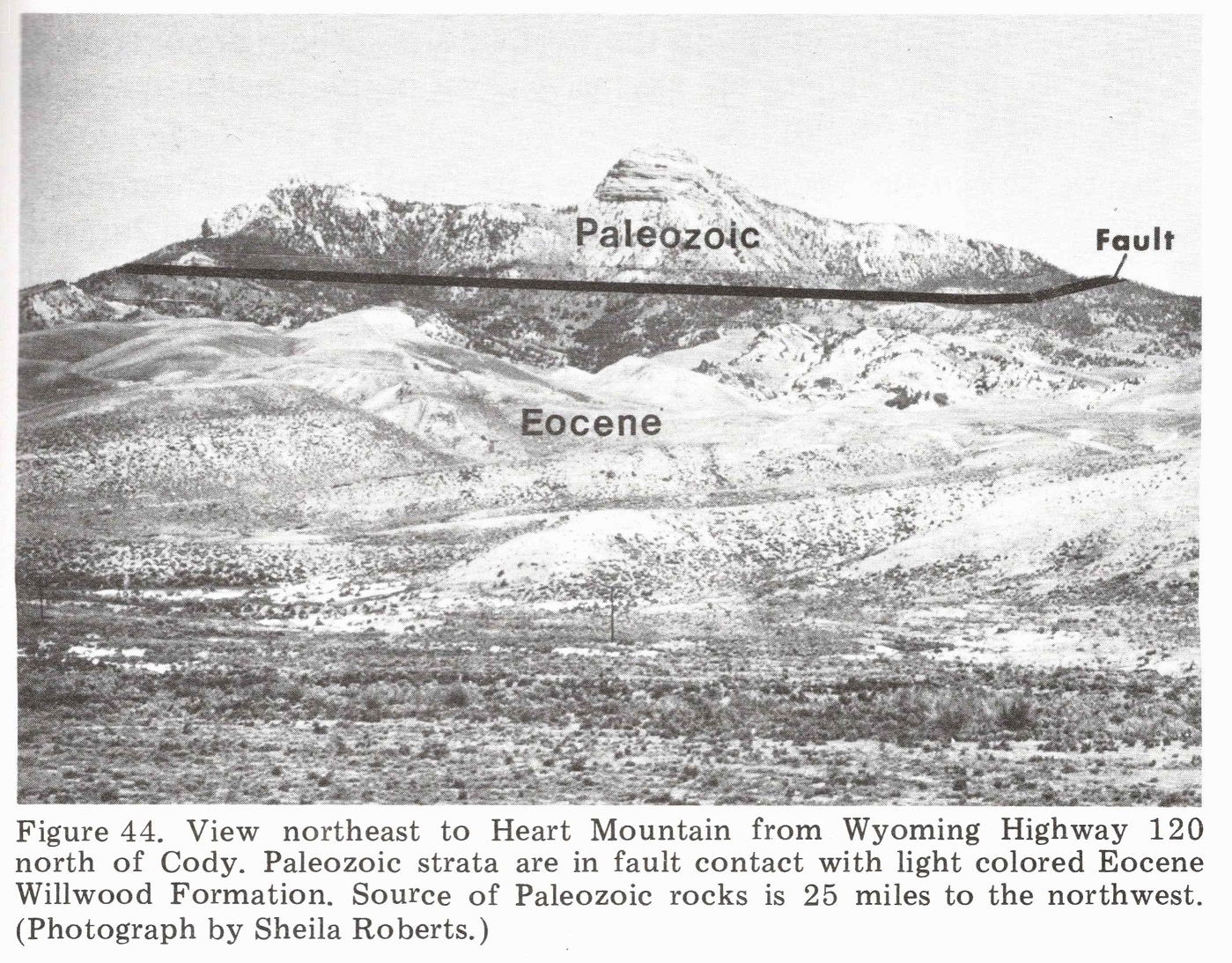
This is what D.L. Blackstone Jr. said about Heart Mountain in Travelers Guide to the Geology of Wyoming in 1988:
“Northeast of Cody and east of Wyoming Highway 120, is Heart Mountain, a prominent, isolated, pyramidal shaped mountain (Figure 44). This isolated body of Paleozoic limestones rests upon the Eocene Willwood Formation, a complete reversal of the normal stratigraphic order. The Paleozoic limestones have moved downslope over 25 miles from their original location, all under the influence of gravity, on a surface of very low eastward gradient. Other similar masses of Paleozoic limestone can be seen from Wyoming Highway 296 over Dead Indian Hill and into the Sunlight Basin country along the upper reaches of the Clarks Fork River. The mechanics of emplacement of these large detached masses of Paleozoic limestone poses one of the most enigmatic problems in Wyoming geology.”
From Blackstone, D.L., Jr., 1988, Travelers Guide to the Geology of Wyoming, second edition: Geological Survey of Wyoming, Bulletin 67, pages 86-87
=
George Snyder Memorial Fund
George Leonard Snyder was born and raised in Kingston, New York. He graduated from high school in 1945, then entered the U.S. Navy and trained as a pilot. After World War II, Snyder attended Dartmouth College, graduating Cum Laude with a B.A. degree. In 1952, he received a M.S. degree in geology from the University of Chicago. Snyder began his 42-year career with the U.S. Geological Survey in 1949 as a summer field assistant while going to college. He spent his summers mapping geology in the Aleutian Islands, Kentucky, Connecticut, Colorado and, finally, Wyoming. He was a Chief of the Denver Publications Unit and later served two years as the Deputy Assistant Chief Geologist for the USGS in Washington, DC.
Snyder was known nationally and internationally for his work in Precambrian geology. A self-proclaimed goal reflected in his work was “squeezing maximum goodies per acre out of a reluctant Nature.” He was president of the Colorado Scientific Society in 1977 and a member of the Geological Association of Canada. He was a frequent leader of Society field trips dating back to the 1970s. He also was instrumental in helping establish the Society’s Memorial Funds investment policies in the 1980s.
George died August 16, 1998 at the age of 71. The George Snyder Memorial Fund was started in October 1998 with generous donations from his children’s trust, Arthur French, the Mobil Oil Foundation, and other family and friends. The first grant was awarded in 1999. The George Snyder Fund follows the general guidelines of the other funds.
=
Bruce Bryant Memorial Fund
The Bruce Bryant Memorial Fund was established as a tribute to Dr. Bryant’s long and productive career with the U.S. Geological Survey as a leading authority on the geology of Colorado. With the possible exception of the distinguished geologist Ogden Tweto, perhaps no other geologist has studied more areas in Colorado or has made a greater contribution to our understanding of this state’s geology. His geological insights have fundamentally advanced our understanding of structure, stratigraphy, ore deposits, and surficial features in the Rocky Mountain region. In addition to Colorado, Bryant undertook research in four other states and his studies have resulted in over 100 publications.
Dr. Bryant received his undergraduate degree from Dartmouth College and Ph.D. from the University of Washington under the guidance of Professor Peter Misch, who taught that to really understand geology one must spend time in the field. This fit well with Bryant’s love for the outdoors and he would spend long summers traversing many wide-ranging corners of Colorado. He was also an avid skier and hiker. Dr. Bryant passed away at the age of 90 on January 12, 2021 in Boulder, Colorado. He was preceded in death by his wife, Sandy, and is survived by his four children and numerous grandchildren and great grandchildren.
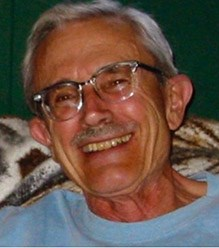
It is the intention of the Colorado Scientific Society that the Bruce Bryant Memorial Fund will support the studies of a young and upcoming geologist in his or her field-oriented student research.
See more about Bruce Bryant’s life and work here.
See the details of the awards granted from these funds and awardees on the CSS Student Research Grants page and in the History of the Colorado Scientific Society from 1882 through 2002 (PDF), pp 56-64.
=
Charles Pillmore Fund for Students on CSS Field Trips
The Charles Pillmore Fund (established in 2004) supports student participation on Society field trips. Charles Pillmore was Colorado Scientific Society President in 1984-1985; he initiated Student Night in 1984, and he wrote the draft guidelines for the Ogden Tweto Memorial Fund, our first student research grant fund. He was involved in the CSS from the 1960s until his death, and was a popular speaker and field-trip leader.
Charles Pillmore Obituary from The Denver Post
September 7, 2003
by Bill Schenley
Denver geologist Charles Lee Pillmore, who discovered the world’s only undisputed fossilized footprint of a Tyrannosaurus rex, died Aug. 22 of prostate cancer. He was 73.
Chuck Pillmore, a research geologist based in the Denver office of the U.S. Geological Survey, discovered the dinosaur track on Aug. 16, 1983. It was hot and dry that day in northeastern New Mexico. “I recall chancing upon the track while mapping in North Ponil Canyon on the Philmont Scout Ranch, north of Cimarron,” he wrote, with characteristic precision, in a 1998 article printed in Dinosaur World, a paleontology newsletter. “I noticed a strangely shaped feature on a large block of sandstone only a short distance above the creek level. It appeared to be a natural cast resembling the footprint of a large, three-toed animal, probably a dinosaur.” Pillmore thought the block must have fallen from a higher ledge. The cast of the dinosaur’s left hind foot was enormous – almost 3 feet long and 2 feet wide. It looked “like a big bird track,” he later told Palo Alto Online. He noted the location in his field book, photographed the track and took some samples of the sandstone. When he submitted the samples for analysis, the paleontologist’s report found fragments of fish scale, alligator teeth, turtle shell and bone.
For the next few years, Pillmore was preoccupied with his mapping project – charting the Raton Quadrangle, which extends from Cimarron in southwestern New Mexico to Capulin National Monument in northeastern New Mexico and north to Walsenburg in Colorado. He was interested in iridium, which is so evenly deposited from New Mexico to Canada that many geologists, including Pillmore, believe it is a result of an asteroid impact.
Pillmore revisited the North Ponil Canyon track site several times over the next 10 years. The footprint was in the layer just under the iridium deposit that Pillmore was documenting. He told other geologists and paleontologists about the track and showed them the photographs. Most of them thought the description and location suggested a large hadrosaur, a fairly common vegetarian dinosaur.
In late summer of 1993, when more dinosaur tracks were discovered in southeastern Colorado and northern New Mexico, Pillmore persuaded University of Colorado at Denver paleontologist Martin Lockley to accompany him to the North Ponil Creek site. Lockley, who specializes in identifying dinosaur tracks, was sure he would be confirming the track’s originator as a hadrosaur. But when they got to the site and prepared to make a latex mold of the track, Lockley had second thoughts. “The track was much larger than any hadrosaur heel he could recall,” Pillmore told Dinosaur World.
“After 10 or five minutes, I said, ‘This is not a hadrosaur,”‘ Lockley said when the men returned to Denver. “I couldn’t believe how big it was. It was a theropod” – a predator – “and at that size, the only thing it could be was a Tyrannosaurus rex.” Examining the track more closely, they saw a distinctive shape on one side. Lockley speculated that it had been made by a hallux – a fourth digit on the dinosaur’s foot. The track’s size and shape provided “convincing evidence that we were looking at possibly the first Tyrannosaurus rex track ever seen,” Pillmore said in that interview. Farley Fleming, a fossil pollen specialist, established the track’s relative age at 65 million to 70 million years, the right age range for a Tyrannosaurus rex.
In 1994, Lockley and his associate Adrian Hunt submitted a proposal to Ichnos, an international journal on plant and animal traces, to name the track “Tyrannosaurus pillmorei,” in honor of Pillmore. The proposal was accepted. Tyrannosaurus pillmorei made headlines throughout the world. “Great stride in dinosaur sleuthing,” announced Australia’s Sydney Morning Herald.
It’s hard to overstate the track’s significance among paleontologists. Its shape helped them understand more about the foot’s construction of soft tissue and muscle structure, and how that foot could support a Tyrannosaurus rex’s enormous weight – up to 6 tons – and its daunting height of 60 feet. The position of the hallux – on the side of the track – is valuable for skeletal reconstruction, and the presence of claw marks suggests large claws. The track’s location extended the dinosaur’s known range about 250 miles south from the nearest known occurrence.
Pillmore’s three children immediately understood the track’s importance. Pillmore trained them to see the world with a geologist’s eye when the Pillmores went on road trips. “See that hill over there, the one with the black rock around?” he once asked his daughter, Kathy, during a childhood trip. “Millions of years ago, that was an active volcano, with lava being spewed out all over the land around it.” He took his family along when he taught university courses in Mexico City, and he brought them on trips throughout the U.S. and Canada, and a 1974 trip through Russia, Poland, Switzerland and France.
Pillmore’s primary focus was on the geology of the Raton basin. His detailed study of the Vermejo Park-Raton area resulted in identifying significant coal reserves, including a coal mine that locals called the Pillmore Mine. Pillmore’s work in the Raton basin included identifying a boundary layer of thin white clay that marked the abrupt end of many pollen species, with concentrations of cosmic elements, including iridium, up to 7,000 times higher than in the underlying layer. His documentation was essential to the theory that a large asteroid collision was directly or indirectly responsible for the abrupt extinction of dinosaurs and other species. The late scientist Gene Shoemaker named a newly discovered asteroid in his honor: Pillmore 4368.
Pillmore retired from the USGS in 1993 but continued to be involved in geologic investigations throughout the world. He often spoke about geology and dinosaurs at his grandchildren’s schools and enjoyed giving speeches to civic and community groups.
His bleakest moment was when his daughter, teacher Karen Pillmore Bow, died of breast cancer in 2001. She was 46.
A memorial service for Pillmore will be held at 4 p.m Saturday at the Jefferson Unitarian Church, 14350 W. 32nd Ave. in Golden.
Survivors include his wife, Arlene Pillmore of Lakewood; a daughter, Kathy Pillmore Schindler of Centennial; a son, Roy Pillmore of Raton, N.M.; and seven grandchildren.
Memorials may be sent to the Charles Pillmore Memorial Fund of the Colorado Scientific Society, P.O. Box 150495, Lakewood, CO 80215.
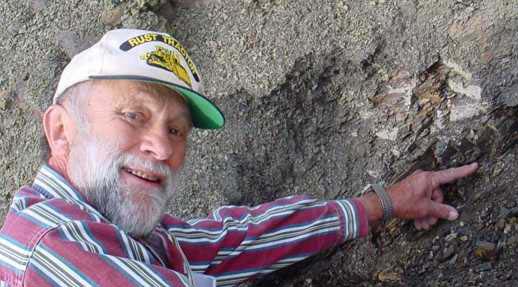
More about Chuck Pillmore
See the Tyranosaurus rex track on Wikipedia at https://en.wikipedia.org/wiki/Tyrannosauripus
You can see the hallux on the foot.
This memorial to Charles Pillmore is posted on the Geological Society of America.
The CSS September, 2003 Newsletter has a memorial to Chuck Pillmore on pages 4 and 5.


